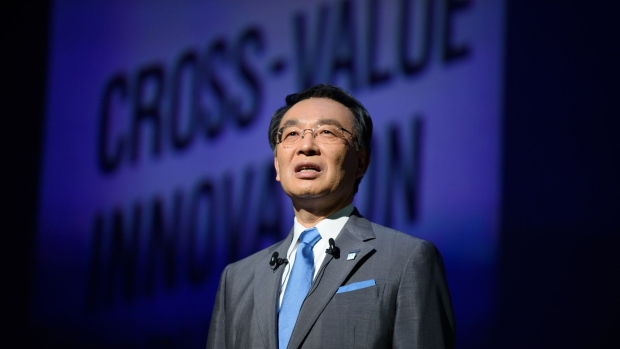Nov 21, 2019
Panasonic CEO Vows to ‘Eradicate’ Money-Losing Businesses
, Bloomberg News

(Bloomberg) -- Panasonic Corp. Chief Executive Officer Kazuhiro Tsuga says he is getting serious about profits.
Chronically money-losing businesses and operations that have little prospect of healthy profit margins will have to go, Tsuga said at a briefing in Tokyo on Friday, declining to name specific companies. The company will end production of some products, such as the liquid crystal display withdrawal announced yesterday, while other units could be combined. Panasonic also plans a wave of consolidations in far flung bases from Latin America to Europe and Japan.
Panasonic is targeting 100 billion yen ($921 million) in savings in fiscal year ending March 2022. Reduction in personnel costs from early retirement and new hires and trimming of consolidation of operations will contribute 30 billion yen each. Closing unprofitable businesses will save another 40 billion yen.
“Our mid-term goal is simple -- breaking out of this low-profitability state,” Tsuga said in a media address ahead of Panasonic’s annual IR Day. “We will eradicate losses, starting with operations that are structurally unprofitable.”
Tsuga took helm of Panasonic in 2012, promising to steer the 100-year-old company away from money-losing consumer electronics to focus on housing, car information systems and batteries for electric cars, including those for Tesla Inc. As his first act, Tsuga led the wrenching withdrawal from the plasma TV business, on which he last worked before taking the top job. While he succeeded in stemming losses, the profit growth didn’t follow. The company’s 5% operating profit margin is half that of Sony Corp.
The bet on Tesla has also been a source of concern as the carmaker went through what Chief Executive Officer Elon Musk called “production hell” ramping up output of Model 3 sedans. While production at the Gigafactory the two companies jointly operate in Nevada has improved and sales have climbed, the business has yet to become a major contributor to profit. While losses in the business narrowed last quarter ended Sept. 30, it’s not clear when it will become consistently profitable.
At the same time, Tesla has announced plans to expand production to China and Europe, raising questions about the future of its battery partnership with Panasonic. While the Osaka-based company may still supply Musk’s Chinese assembly lines with batteries made elsewhere, the CEO showed little appetite for doubling down on his Tesla bet.
“At this moment, we have no plans to build a factory in China,” Tsuga said.
To contact the reporter on this story: Pavel Alpeyev in Tokyo at palpeyev@bloomberg.net
To contact the editors responsible for this story: Edwin Chan at echan273@bloomberg.net, Peter Elstrom
©2019 Bloomberg L.P.





